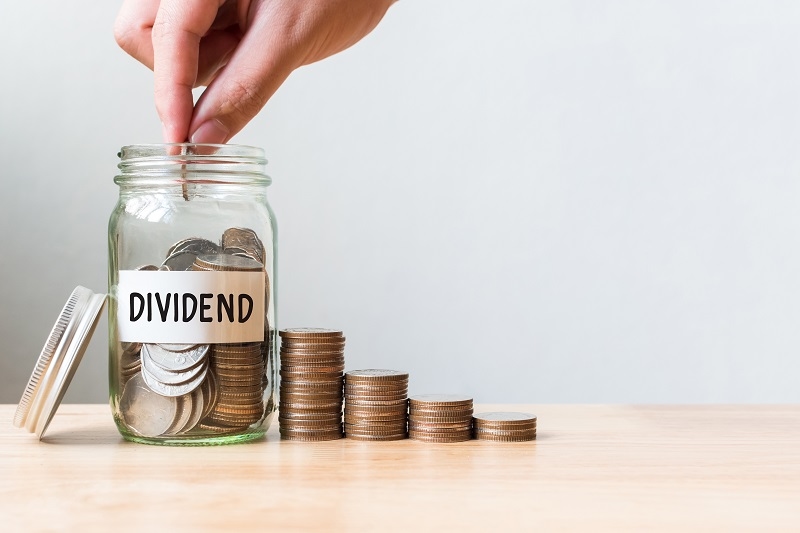
If you’re seeking to construct reliable, routine earnings without continuously shopping for and selling stocks, dividend investing is probably the suitable approach for you. With constant bills from strong groups and the strength of reinvestment, dividend investing provides a clever manner to generate passive profits, particularly for long-term traders.
In this guide, we’ll break down everything you need to recognise approximately dividend making an investment, which includes how to choose high dividend yield shares for income, build a monthly dividend income portfolio, and apply dividend reinvestment techniques to maximise your returns. You’ll also discover ways to make the most of tax-green dividend investing strategies, especially if you’re just beginning out and looking for the fine dividend shares for novices.
Let's explore how this time-tested funding strategy can protect your financial future and provide income while you sleep.
The practice of buying stocks from businesses that distribute regular cash dividends to shareholders as a percentage of their profits is known as dividend investing. These bills—known as dividends—may be acquired monthly, quarterly, or yearly, imparting a constant earnings stream irrespective of the marketplace’s U.S.A.And downs.
Whether you're building a monthly dividend earnings portfolio guide or simply starting to explore passive earnings options, dividend investing can help you obtain lasting monetary independence.
One of the most attractive factors of dividend investing is the capability for predictable, ordinary income. A month-to-month dividend income portfolio allows you to get hold of payments each month, which is particularly useful for retirees or the ones looking to complement a hard and fast income.
While most businesses pay dividends quarterly, some pay monthly. Examples encompass REITs (Real Estate Investment Trusts), business development companies (BDCs), and utility shares. If you couldn’t find sufficient reliable monthly dividend payers, a staggered quarterly dividend timetable can work just as well.
Example staggered strategy:
This shape provides 12 monthly payouts using three exceptional stocks.
To generate full-size coin drift, remember investing in excessive dividend yield stocks for earnings. These are stocks that offer a better return, primarily based on their annual dividend divided by their share price.
Be careful: An excessive yield isn’t always a red flag—it can suggest hazard. Evaluate the corporation’s payout ratio, profit balance, and song report before investing.
That relies on your desires. If you’re still in accumulation mode, applying dividend reinvestment strategies can supercharge your portfolio’s growth. If you’re retired, you may opt to take the dividends as income.
For those new to dividend investing, beginning with confirmed performers is key. The high-quality dividend stocks for beginners normally come from nicely-hooked-up businesses with stable dividend histories and sturdy basics.
Investing in the first-rate dividend stocks for novices is a really perfect way to advantage self belief while creating passive income.
Over time, reinvesting your income can significantly increase your overall return through compounding. Techniques for dividend reinvestment can be carried out through the following methods:
Often without commissions, a DRIP automatically uses your dividend bills to shop for additional shares. DRIPs are perfect for set-it-and-forget-it purchasers because they're offered by several corporations.
While they look forward to beneficial shopping for chances, a few customers choose to acquire dividends in coins. Mostly for the duration of market downturns, this technique enables you to rebalance and make investments in which you see the best potential.
Dividend reinvestment techniques are essential for compounding your profits and expediting your economic goals, no matter the approach you select.

Yield is a key metric whilst evaluating dividend shares. But don't forget—excessive dividend yield stocks for profits should constantly be evaluated in context.
Dividend Yield = (Annual Dividend per Share / Stock Price) × 100
A yield above 4% may be appealing; however, whatever over 6% demands closer scrutiny. Look into:
Careful choice of high dividend yield shares for profits can cause a dependable and developing earnings stream.
Many investors overlook the tax implications of dividend income. Fortunately, there are several tax-efficient dividend-making investment strategies you can use to reduce your tax invoice and increase your after-tax returns
Qualified dividends are taxed at the lower long-term capital gains rate (0%, 15%, or 20%).To qualify:
Place dividend-paying stocks in Roth IRAs or Traditional IRAs to protect your profits from current-year taxes. This is a cornerstone of tax-green dividend, making an investment strategy.
Selling dropping investments to offset taxable dividends can help manage your annual tax liability.
If you live in a high-tax country, recollect municipal bonds or MLPs (grasp constrained partnerships), which often offer tax-deferred or tax-exempt earnings.
Incorporating tax-green dividend investing strategies into your plan guarantees you keep more of what you earn, year after 12 months.
Dividend investing isn't an exception to the guideline that no approach is danger-free. Avoid the subsequent pitfalls:
Continuous research and a varied portfolio help you control threats and increase your passive profits.
Investing in dividends is a philosophy that places a higher priority on long-term financial gains and stability than just choosing stocks. The key is consistency and discipline, whether you're using dividend reinvestment tactics to build your portfolio, selecting high dividend yield equities for profits, or developing a monthly dividend income portfolio guide.
For novices, recognition of stable, dividend-paying agencies with low volatility and robust fundamentals.As you develop greater assurance, put in force tax-efficient dividend-making investment strategies to further beautify your returns and reduce your tax burden.
Start with the nice dividend shares for beginners, reinvest your payouts, and watch your income grow over time. With the proper approach, dividend investing can emerge as your gateway to proper passive profits and long-term wealth.
This content was created by AI